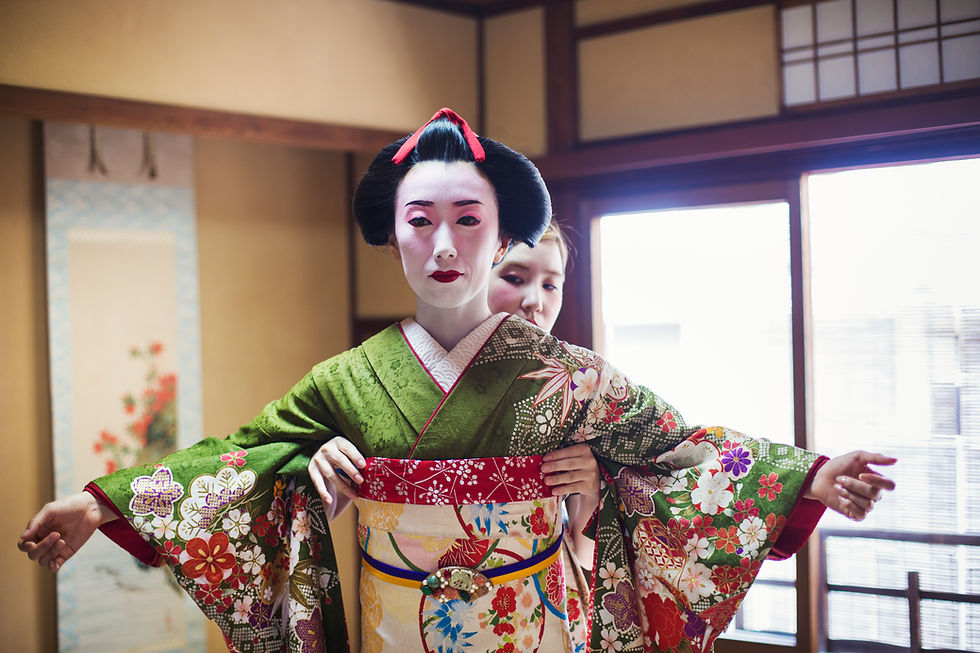The Tale of Genji: Analysing Heian Society Beyond HistoricalFacts and Capturing the Birth of Lasting Societal Trends
- Marco
- Oct 3, 2024
- 3 min read
Throughout human history, periods of peace have catalysed the flourishing of culture and
creativity. Examples include the Renaissance, the Pax Romana, and the prosperity
achieved in China during the Tang and Song Dynasties. As “Heian” (平安) means “Peace”
in Japanese, it is not surprising that during the Heian period, Japan achieved many
cultural, artistic, and literary developments. In this essay, I will explore some salient
characteristics of the Heian period through a literary masterpiece, considered the world’s
first novel (Ray, 2024): The Tale of Genji by Murasaki Shikibu.

The Tale of Genji offers more than just a story, providing insight into the aristocratic
lifestyle of the Heian period. According to Varley (2021), as Japan's court moved from
Nara to Kyoto, the Japanese began detaching from Chinese customs, such as the
practice of compiling official histories like the Nihon Shoki. This shift birthed a new
literary form called rekishi monogatari, blending facts and fiction to portray society
beyond historical events. Though The Tale of Genji is an example of a monogatari, and not
of a rekishi monogatari, it still captures the psychology and lifestyle of the aristocracy,
making it a valuable resource for understanding Heian society.
The tale of Genji tells us about Heian period beauty standards and highlights the already
existing Japanese preference for indirect communication. Through Genji’s love affairs, we
learn that one’s taste was of paramount importance in Heian society. Through romantic affairs, one could display their taste, encompassing calligraphy, poetry, choice of
materials, fragrances, and colour matching (Varley 2021, p. 63-64). Genji was dedicated
to nurturing the gentle arts and embodied all the Heian virtues. As Varley puts it: “He was
dazzlingly handsome, a great lover, poet, calligrapher, musician, and dancer, and the
possessor of impeccable taste” (2021, p. 65). Reflecting on the role of art as a medium of
communication and considering Matsumoto's (1988) definition of haragei—implicit
communication—communication through artistic mediums can already be considered
an early form of haragei. The Tale of Genji illustrates how the Japanese, during the Heian
period, used to interact through “ritual formalities and accumulated experience”
(Matsumoto, 1988).

The Tale of Genji also reveals the impact that Heian society had on bigaku, the Japanese
sense of beauty. Central to The Tale of Genji is the concept of mono no aware, “a kind of
aesthetic value that comes from feelings” (Davies and Osamu, 2002). The
expression mono no aware appears 1,018 times, highlighting a subjective sense of
beauty, unrelated to objective standards, and dependent on one’s feelings. Contrary to
Western standards, mono no aware is not about criteria of excellence and goes beyond
mere appearances, suffused with a melancholy feeling driven by an acknowledgement
of impermanence. For this reason, a withering flower can be moving and beautiful, just
as one can cry while listening to a beautiful song, touched by the knowledge that it will
end.
Finally, The Tale of Genji reveals, within Heian society, a sense of group consciousness,
today called Shūdan Ishiki. The novel is divided into two parts: the first mainly revolves
around Genji’s life and loves, while the second, involving Genji’s successors, conveys a sense of uncertainty and a foreboding that the Heian lifestyle would not last long due to
the growing discontent among the non-aristocratic classes. This sensitivity shows a
certain awareness of the dynamics occurring both within the aristocratic group and
beyond it.
In summary, The Tale of Genji may not be a historical chronicle, but it reveals much about
the development of key aspects of Japanese Heian society that continue to resonate
today.
References:
Davies, R., & Osamu, I. (2002). The Japanese mind understanding contemporary
Japanese culture ed. by Roger J. Davies . Tuttle.
Matsumoto, M. (1988). The unspoken way: HARAGEI ; silence in Japanese business and
Society. Kodansha Internat.
Ray, M. (2024, August 29). The tale of Genji. Enciclopedia Britannica.
Varley, P. (2021). Japanese culture: Fourth edition. University of Hawaii Press.
I am looking forward to visiting Uji with you!
Marco














Comments